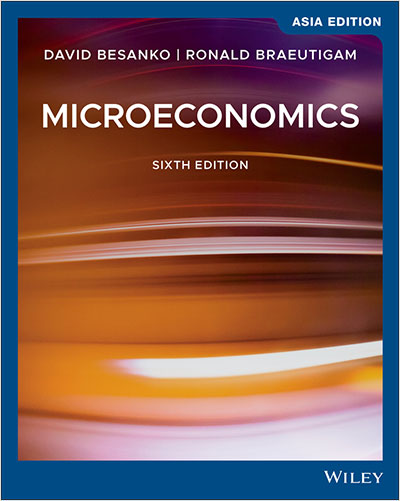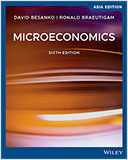
Microeconomics is a classroom-tested resource for learning the key concepts, essential tools, and applications of microeconomics. This leading textbook enables students to recognize and analyze significant data, patterns, and trends in real markets through its integrated, student-friendly approach to the subject — providing practice problems, hands-on exercises, illustrative examples, and engaging applications that ground theory firmly in the real world. Each chapter, opening with a set of clearly defined learning goals based on the Bloom Taxonomy, features numerous Learning-by-Doing (LBD) problems, mathematical and graphical data, and varied problem sets focused on current events.
Now in its sixth edition, the text offers extensive new and revised content throughout. All applications reflect current data and important new developments in the field of economics, including behavioral economics, randomized controlled trials (RCTs) in policy evaluation and design, and computational-based microeconomics. Updated chapter openers, designed to increase student interest, cover topics including the economic impacts of climate change, U.S. household income and spending, surge pricing by Uber and Lyft, the effect of immigration on wages, and advances in robotics, automation, artificial intelligence, and more.
도서 특징
• Presents a structured, integrated approach to microeconomic theory and analysis
• Offers step-by-step explanations and easy-to-use tables and graphs
• Contains numerous fully-worked practice problems with specific numbers and equations
• Provides alternative course designs for teaching microeconomics in a variety of formats and timeframes
• Includes complete teaching resources, such as an instructor’s manual, a solutions manual, a test bank, student quizzes and practice exams, and a study guide
• Features a companion website for both students and instructors that contains PowerPoint slides, Excel spreadsheets, and supplementary resources
• Available E-Text format includes clickable images, interactive tables and graphs, embedded practice quizzes, and audio-enhanced graphics
Part 1 Introduction to Microeconomics
Chapter 1 Analyzing Economic Problems : Microeconomics and Climate Change
Chapter 2 Demand and Supply Analysis : What Gives with the Price of Corn?
Part 2 Consumer Theory
Chapter 3 Consumer Preferences and the Concept of Utility : Why Do You Like What You Like?
Chapter 4 Consumer Choice : How Much of What You Like Should You Buy?
Chapter 5 The Theory of Demand : Why Understanding the Demand for Cigarettes is Important for Public Policy
Part 3 Production and Cost Theory
Chapter 6 Inputs and Production Functions : Can They Do It Better and Cheaper?
Chapter 7 Costs and Cost Minimization : What’s Behind the Self-Service Revolution?
Chapter 8 Cost Curves : How Can Hisense Get a Handle on Costs?
Part 4 Perfect Competition
Chapter 9 Perfectly Competitive Markets : A Rose is a Rose is a Rose
Chapter 10 Competitive Markets: Applications : Is Support a Good Thing?
Part 5 Market Power
Chapter 11 Monopoly and Monopsony : Why Do Firms Play Monopoly?
Chapter 12 Capturing Surplus : Why Did Your Carpet or Your Airline Ticket Cost So Much Less Than Mine?
Part 6 Imperfect Competition and Strategic Behavior
Chapter 13 Market Structure and Competition : Is Competition Always the Same? If Not, Why Not?
Chapter 14 Game Theory and Strategic Behavior : What’s in a Game?
Chapter 15 Risk and Information : Risky Business?
Chapter 16 General Equilibrium Theory : How Do Gasoline Taxes Affect the Economy?
Chapter 17 Externalities and Public Goods : When Does the Invisible Hand Fail?
도서구입 안내
<한빛아카데미> 도서는 한빛 홈페이지에서 더 이상 판매를 하지 않습니다. 도서 구입은 인터넷 서점을 이용하시기 바랍니다. 양해바랍니다.

